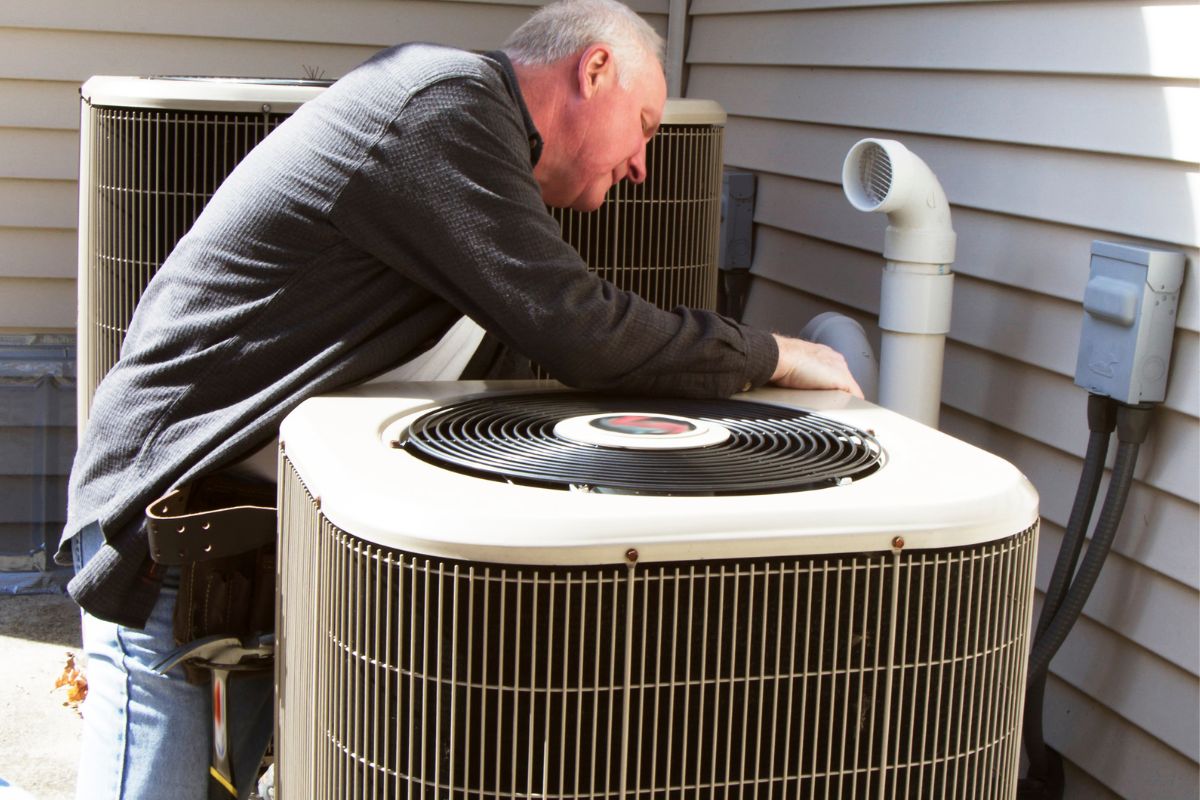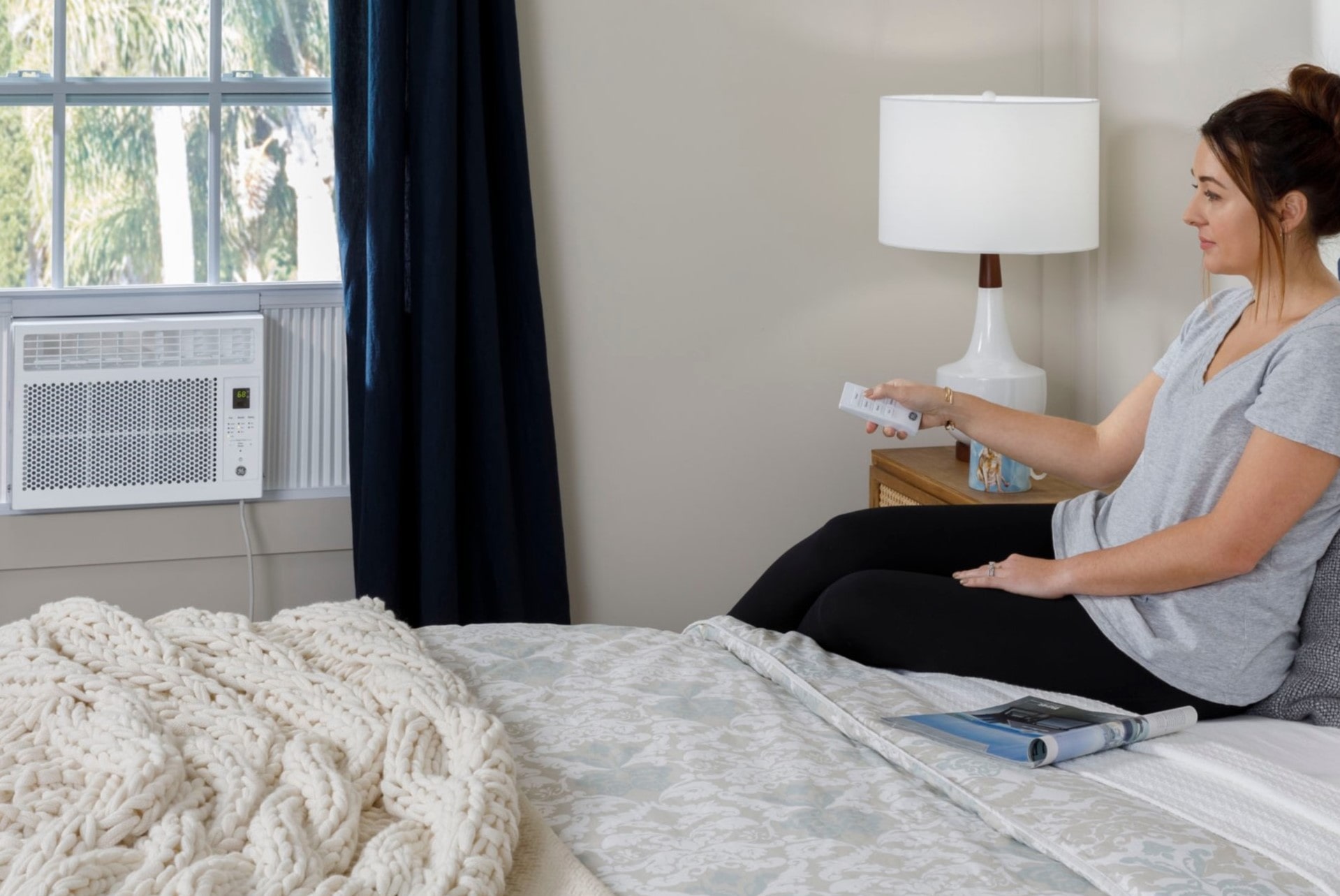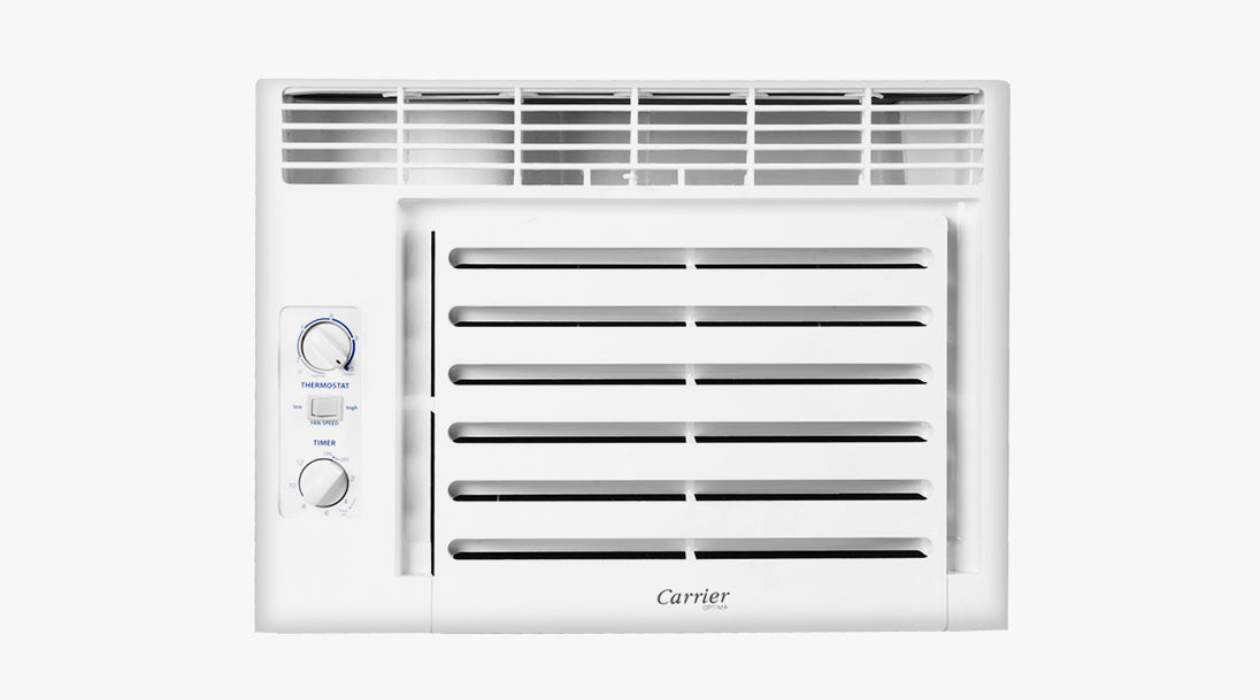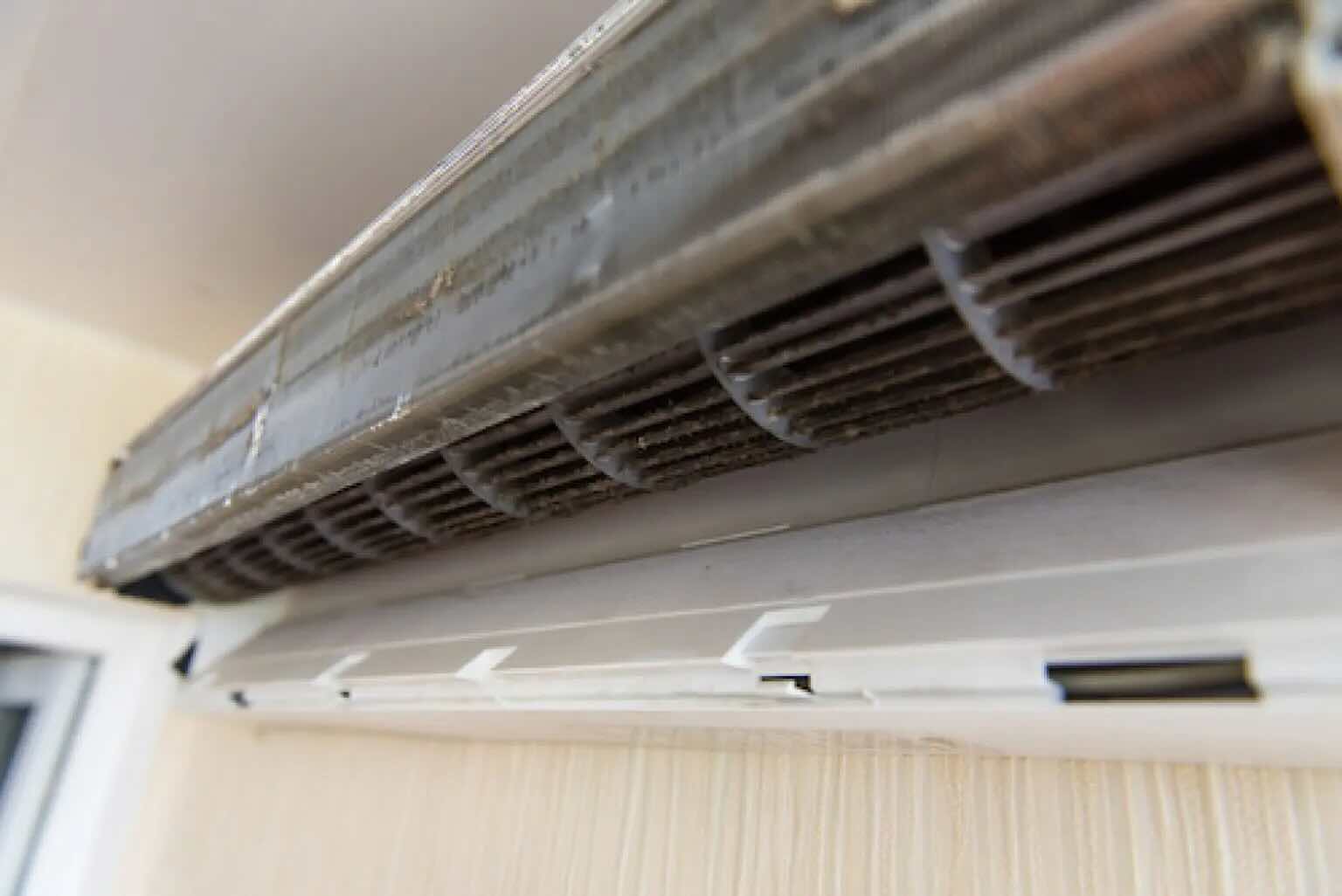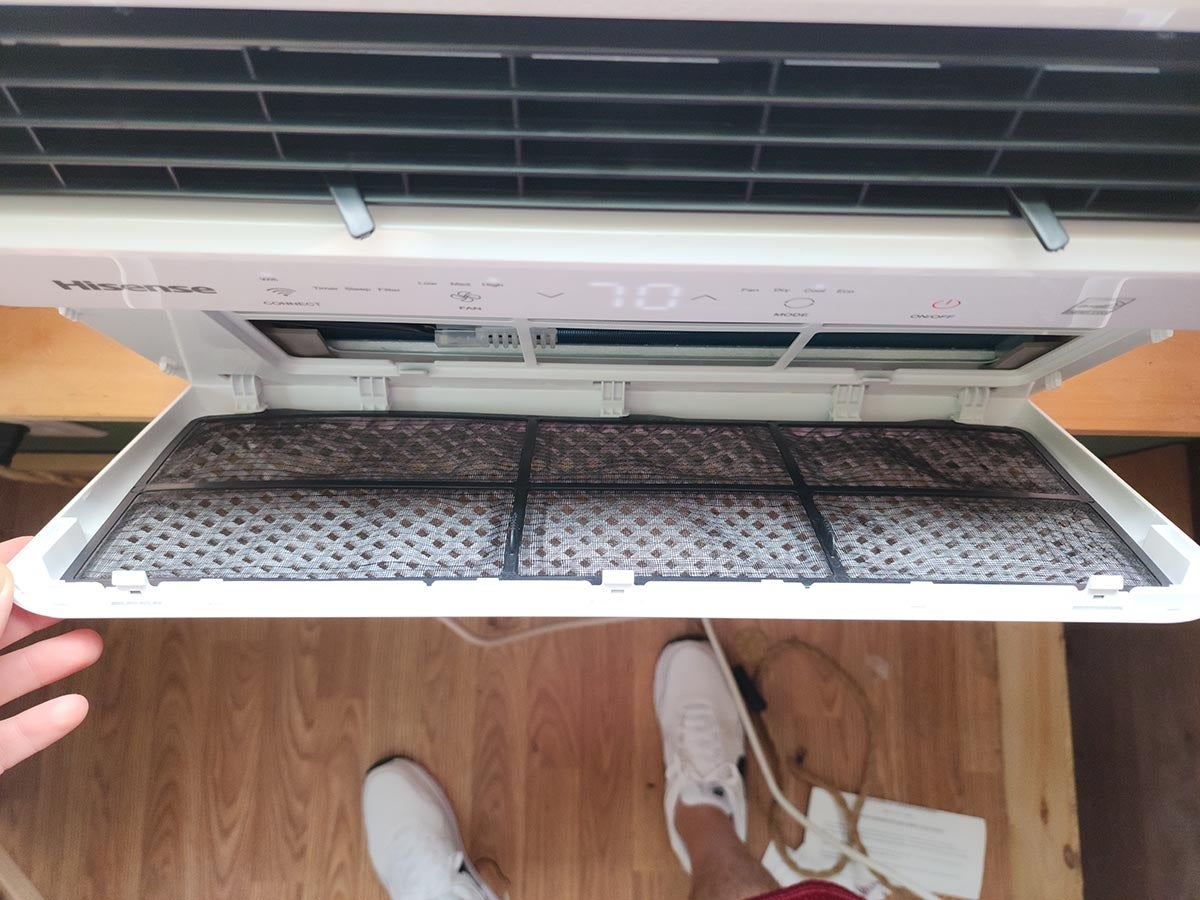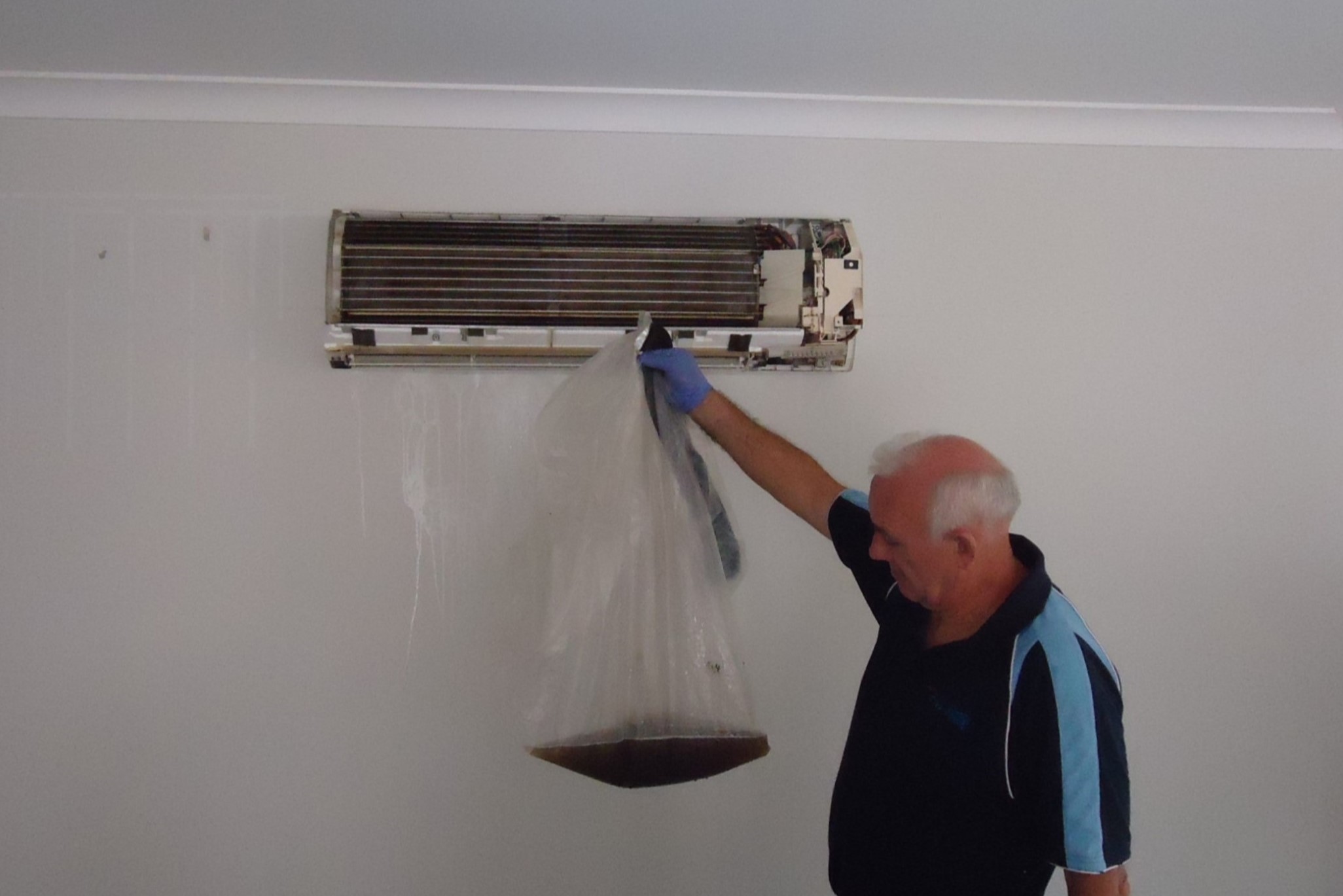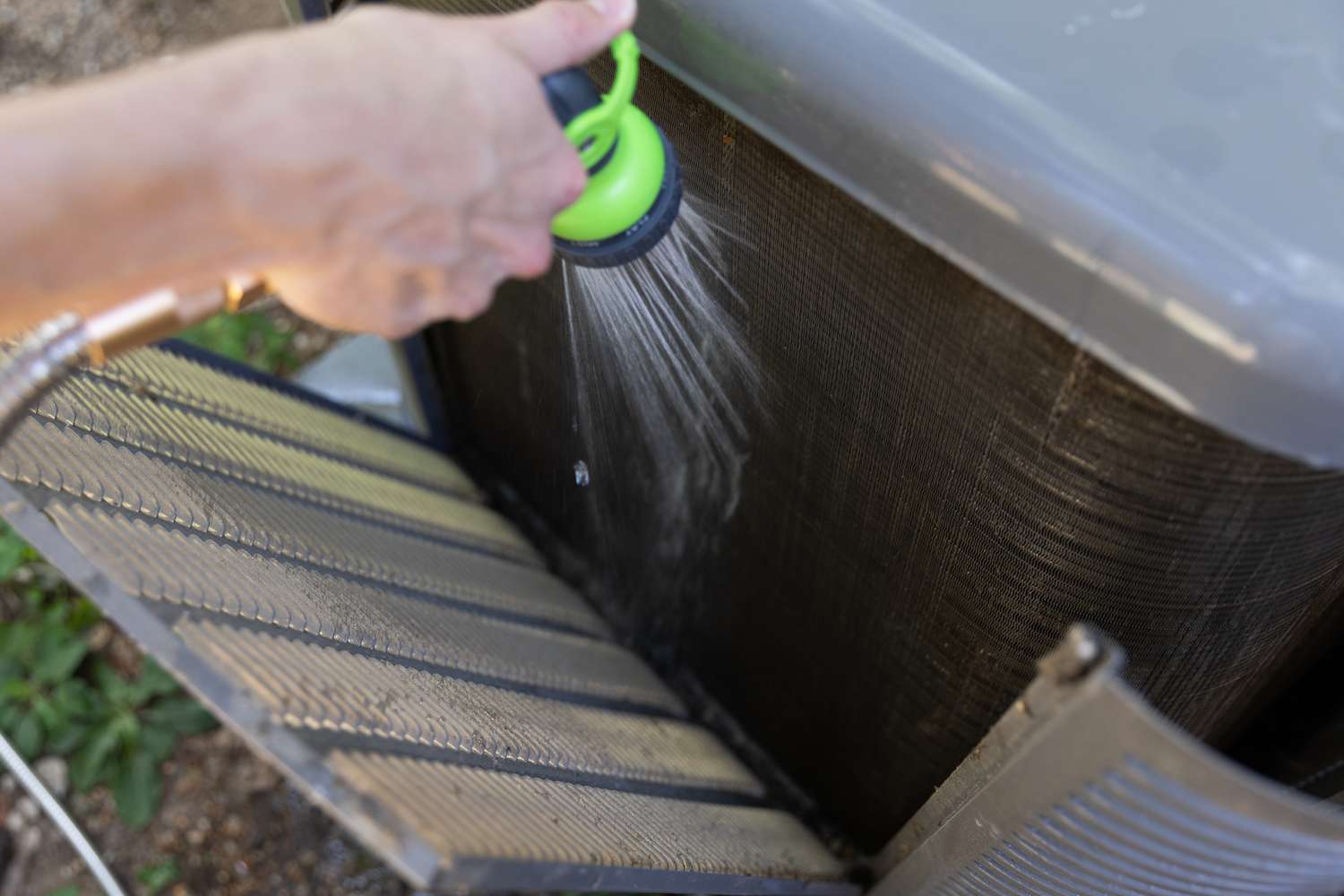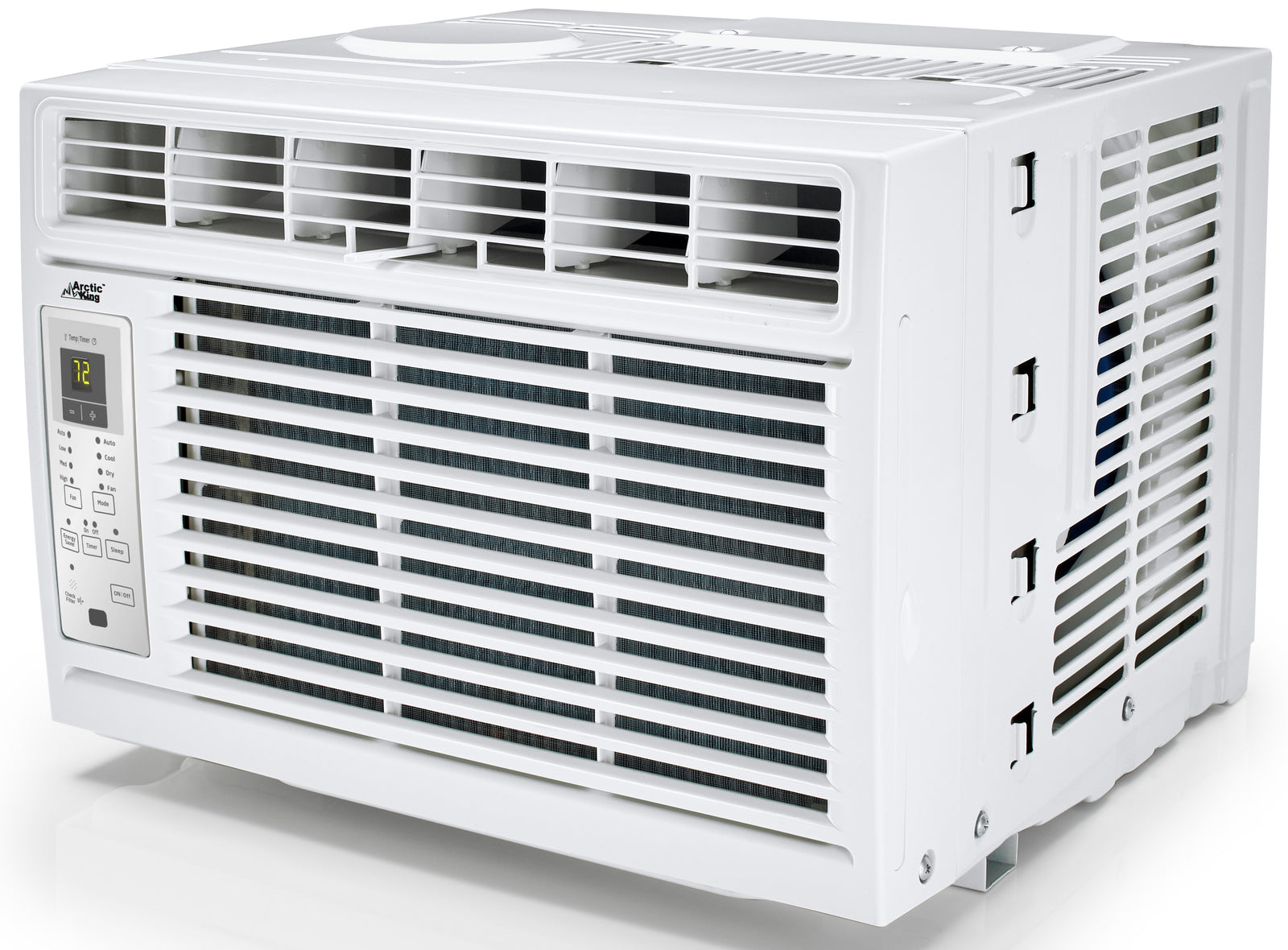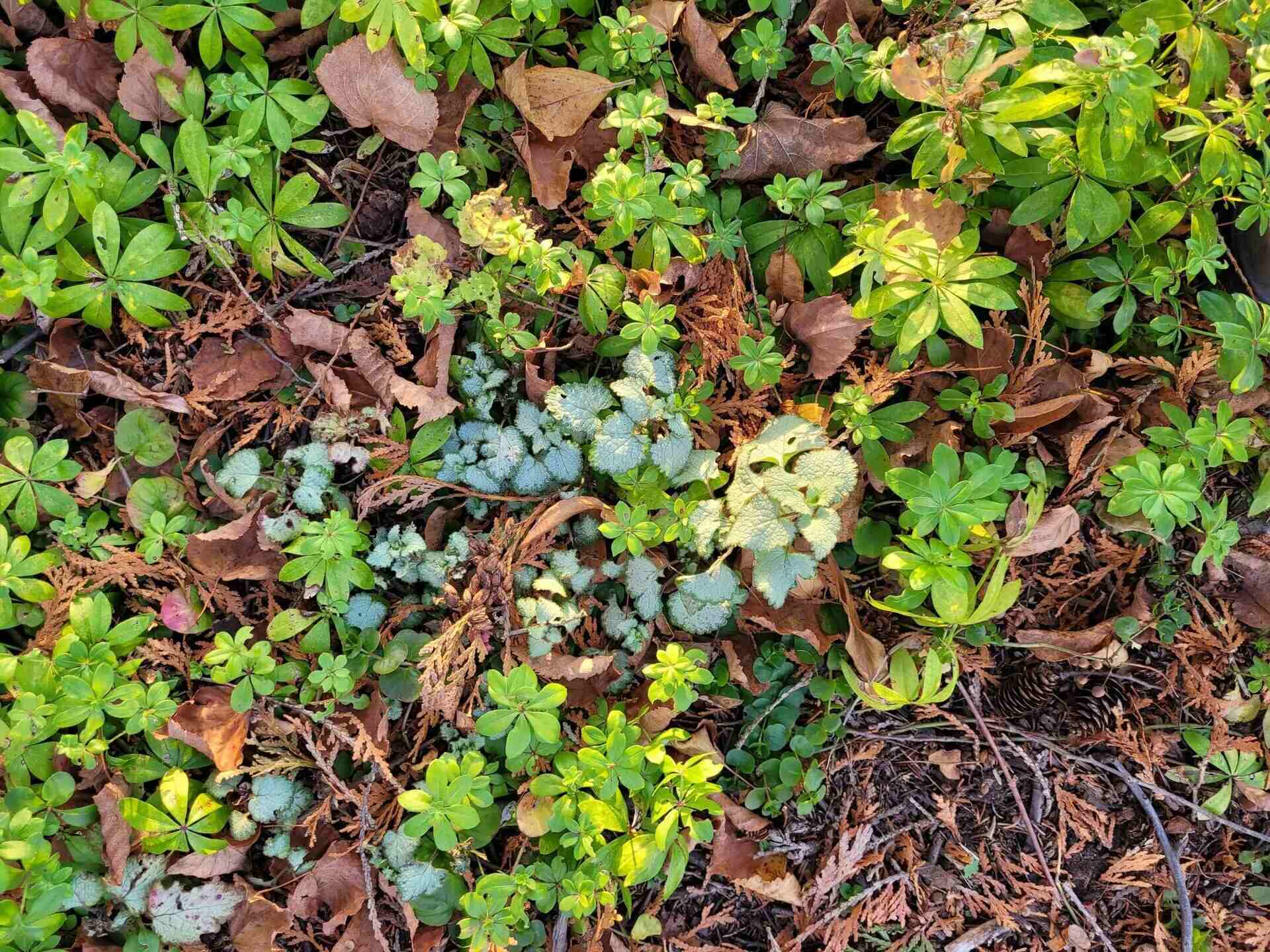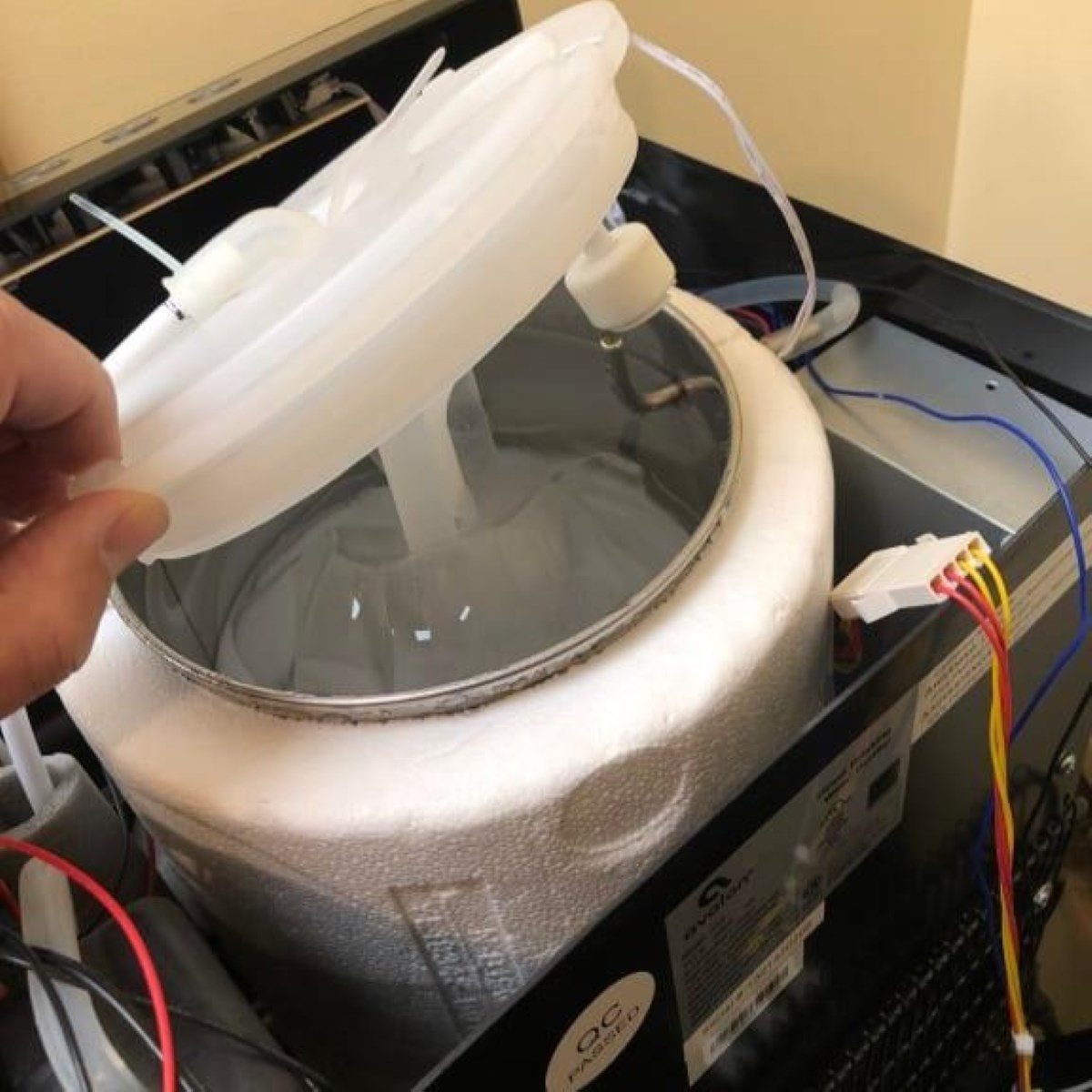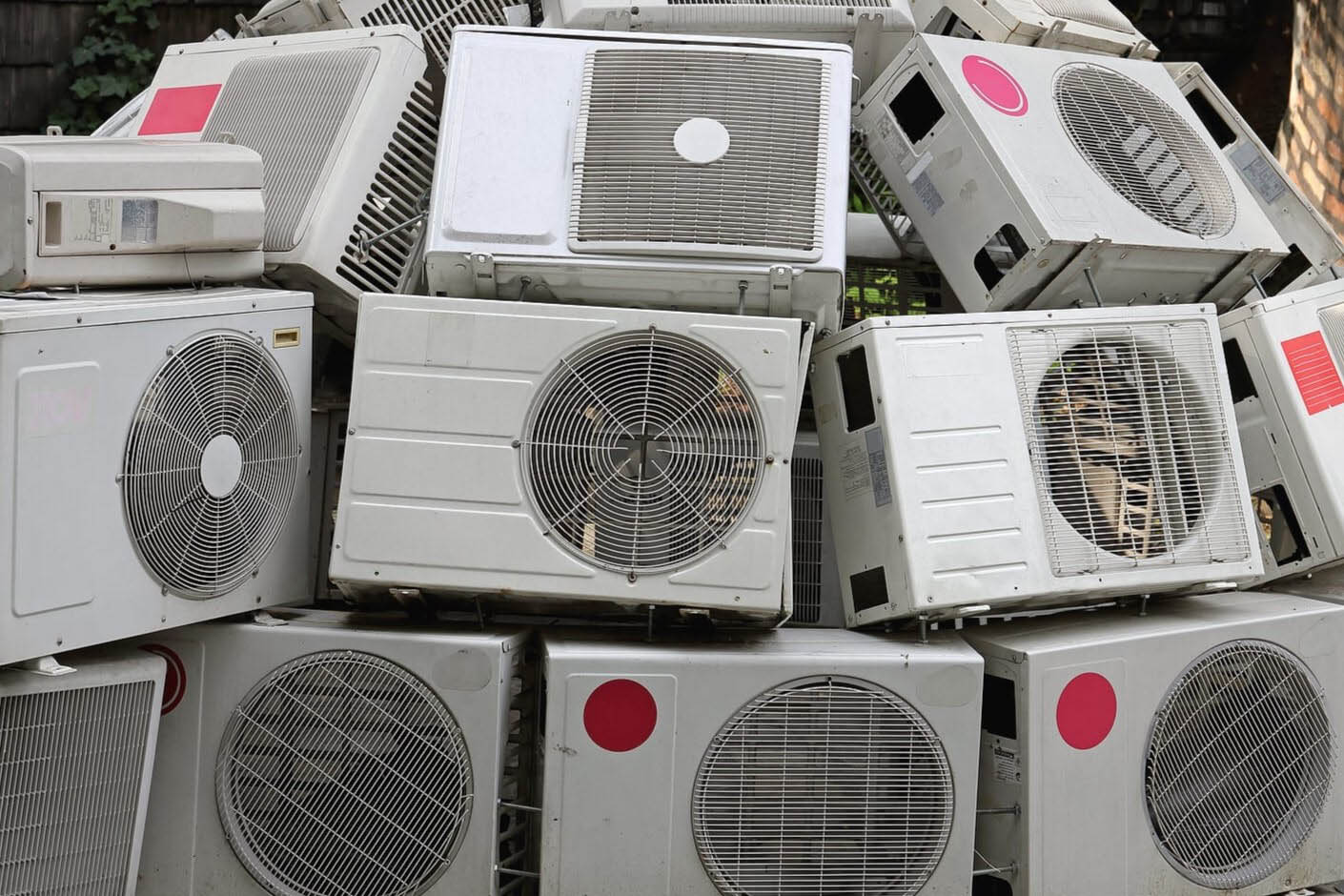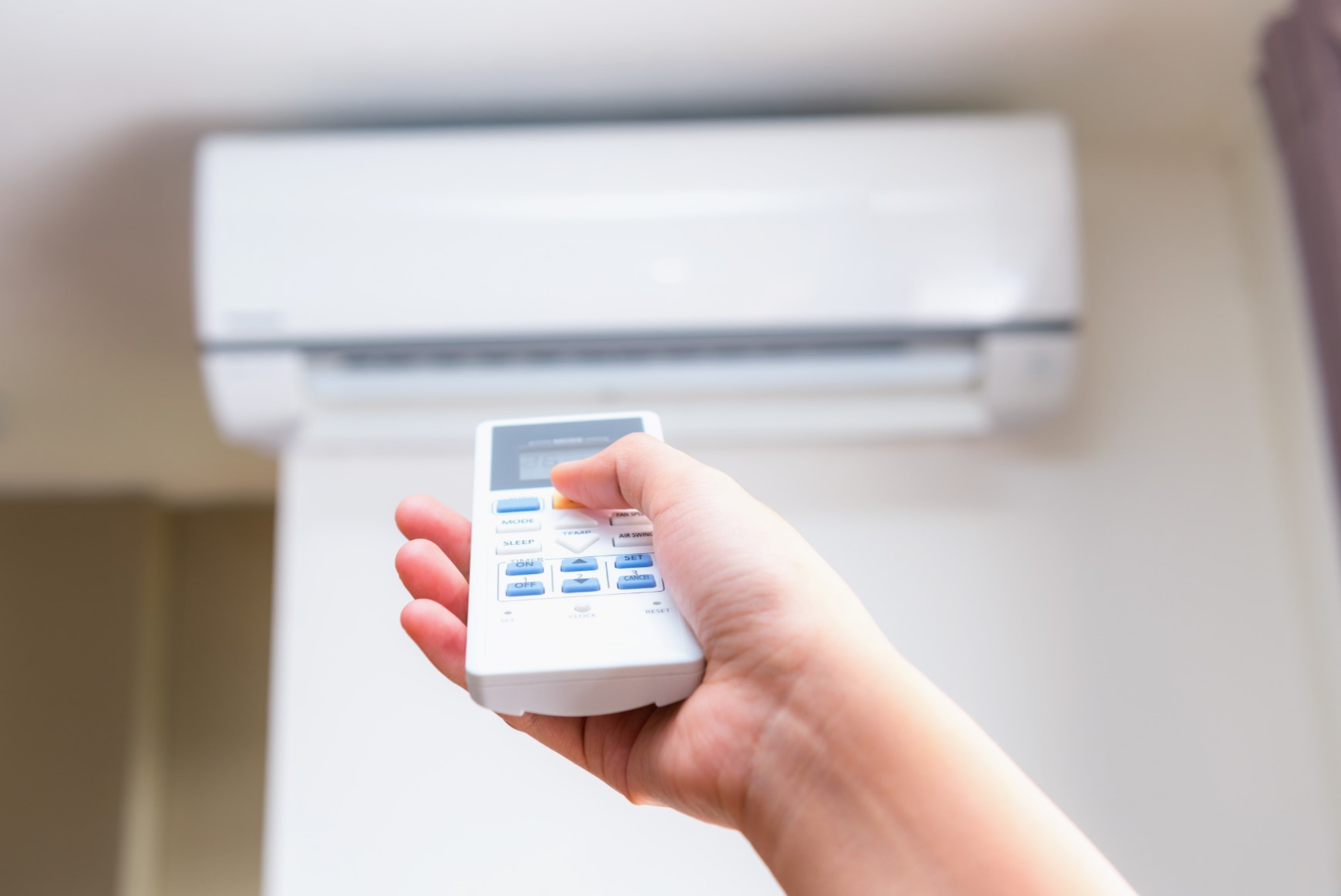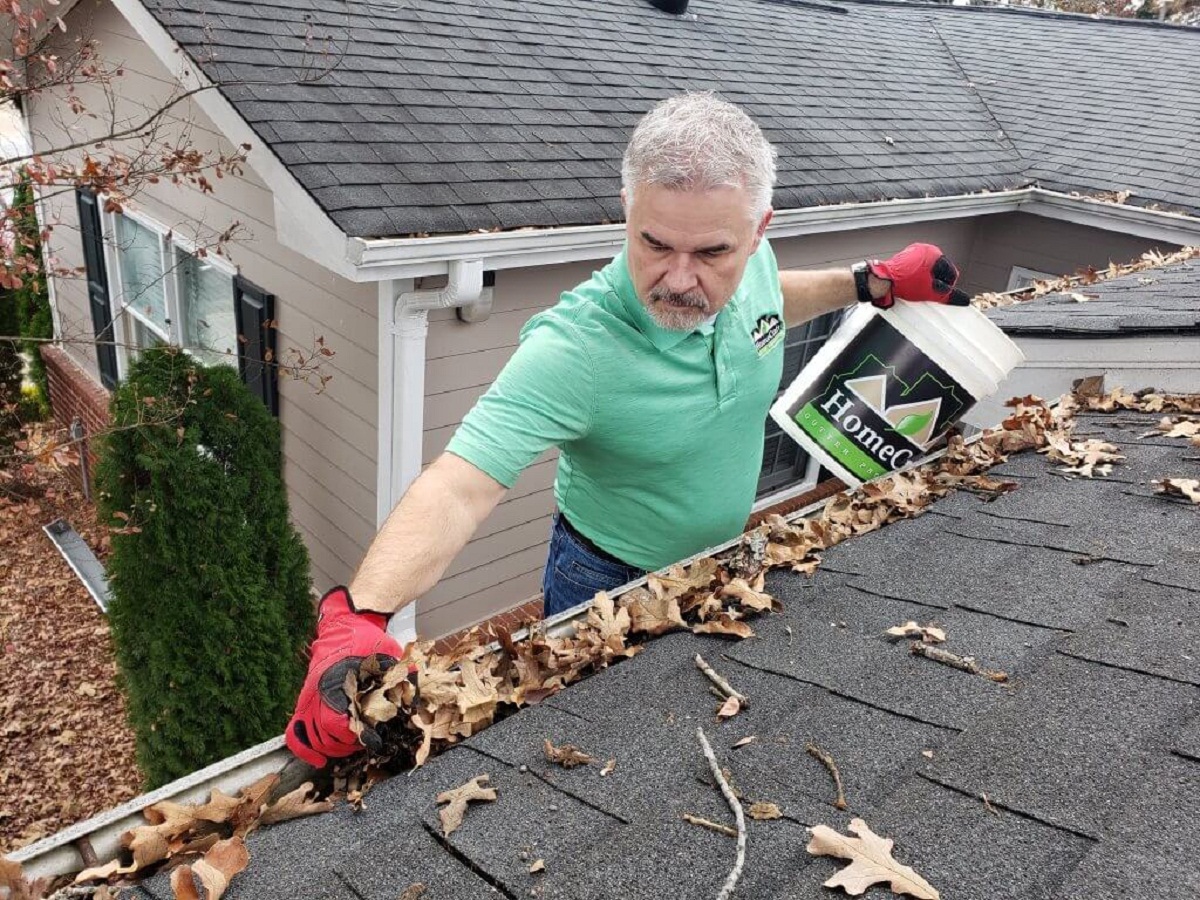Home>Home Maintenance>How To Clean Leaves Out Of Air Conditioner
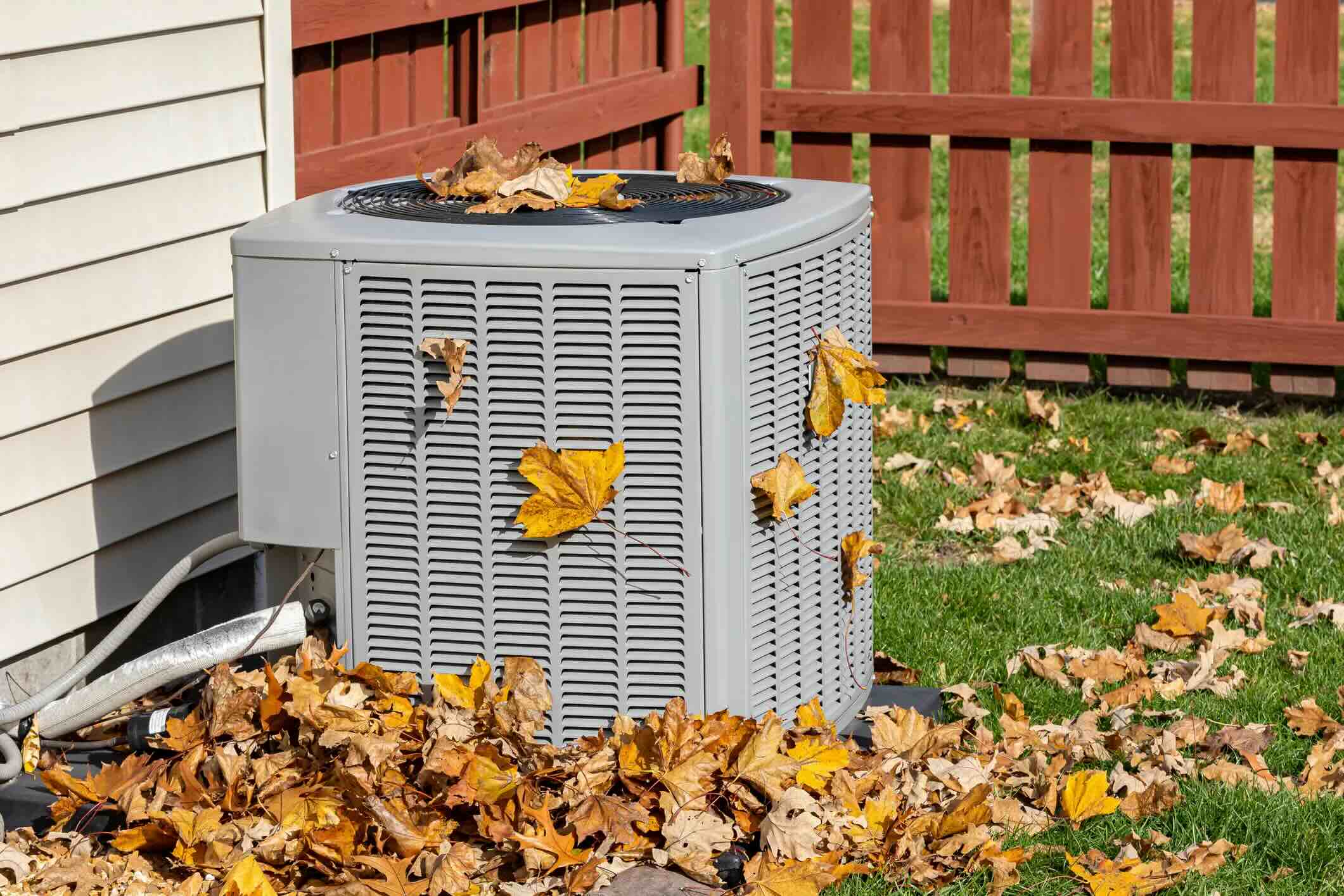

Home Maintenance
How To Clean Leaves Out Of Air Conditioner
Modified: March 7, 2024
Learn how to effectively clean leaves out of your air conditioner with our step-by-step guide. Keep your home's maintenance in check with these helpful tips.
(Many of the links in this article redirect to a specific reviewed product. Your purchase of these products through affiliate links helps to generate commission for Storables.com, at no extra cost. Learn more)
Introduction
Welcome to our comprehensive guide on how to clean leaves out of your air conditioner. With autumn in full swing, leaves can wreak havoc on your outdoor unit, clogging up the system and reducing its efficiency. Regular maintenance is crucial to ensure your air conditioner performs optimally and lasts longer. In this article, we will discuss the impact of leaves on air conditioners, the tools required for cleaning, the step-by-step process, and important precautions to take while cleaning. By following these guidelines, you can keep your air conditioner leaf-free and running smoothly.
Leaves may seem harmless, but when they accumulate in your air conditioner, they can cause a range of issues. Firstly, they can obstruct the airflow, making it harder for the unit to draw in air and cool properly. This can result in decreased efficiency, longer cooling times, and higher electricity bills. Moreover, leaves can also trap moisture, promoting the growth of mold and mildew, which not only leads to a foul smell but can also affect the air quality indoors. Furthermore, leaves can cause physical damage to the unit, such as bending fins or blocking drainage pipes, which can lead to costly repairs if not addressed in a timely manner.
To effectively clean leaves out of your air conditioner, you’ll need a few essential tools. Firstly, you’ll need a pair of gloves to protect your hands from any debris or sharp edges. A small brush with firm bristles will come in handy for dislodging and removing stubborn leaves from hard-to-reach areas. A standard garden hose with a spray nozzle attachment will be useful for rinsing off the leaves and any other debris. Finally, you might need a screwdriver or wrench to open the unit and access the interior for a thorough cleaning.
Now that you have an understanding of the impact of leaves on air conditioners and the tools required, let’s dive into the step-by-step process of cleaning leaves out of your air conditioner. By following these instructions carefully, you can ensure that your air conditioner stays in top shape and continues to provide efficient cooling throughout the season.
Key Takeaways:
- Regularly cleaning leaves out of your air conditioner is crucial to prevent reduced efficiency, mold growth, and potential fire hazards. It’s a simple task that can save you money and keep your home comfortable.
- Before cleaning your air conditioner, always turn off the power, wear protective gear, and handle tools with care. If unsure, seek professional help to ensure safety and optimal performance.
Read more: How To Clean A Frigidaire Air Conditioner
Understanding the Impact of Leaves on Air Conditioners
Leaves may seem harmless, but when they accumulate in your air conditioner, they can have a significant impact on its performance. Understanding these effects will help you grasp the importance of regularly cleaning leaves out of your air conditioner.
One of the primary concerns with leaves in an air conditioner is the obstruction of airflow. The outdoor unit of your air conditioner relies on a steady flow of air to operate efficiently. When leaves or other debris clog the unit, it restricts the airflow, forcing the air conditioner to work harder to cool your space. This increased strain on the system can lead to reduced efficiency and higher energy consumption, which translates to increased utility bills.
In addition to reduced efficiency, leaves can also trap moisture in your air conditioner. As rainwater or condensation collects with the leaves, it creates a damp environment, which is an ideal breeding ground for mold and mildew. These fungal growths not only produce an unpleasant odor, but they can also negatively impact the air quality in your home. Breathing in mold spores can lead to respiratory issues, especially for individuals with allergies or asthma.
Furthermore, leaves can cause physical damage to the air conditioner. The unit’s fins, which are responsible for dissipating heat, can bend or become misaligned when leaves get caught between them. This restricts the airflow and impairs the cooling capacity of the system. Additionally, leaves can block the drainage pipes, preventing proper water removal. If water accumulates inside the unit, it can damage the internal components and lead to costly repairs.
Leaves also pose a fire hazard to your air conditioner. Though it may seem unlikely, dry leaves can become highly flammable, especially in the presence of electrical components. If leaves ignite within the unit, it can cause a fire and potentially damage your property.
Overall, the impact of leaves on air conditioners is significant. From reduced efficiency and increased energy consumption to mold growth and physical damage, neglecting to clean leaves out of your air conditioner can lead to a range of problems. Regular maintenance is essential to ensure that your air conditioner operates optimally, maintains good indoor air quality, and remains safe.
Now that you understand the impact of leaves on air conditioners, let’s move on to the tools required for cleaning leaves out of your air conditioner.
Tools Required for Cleaning Leaves out of Air Conditioner
When it comes to cleaning leaves out of your air conditioner, having the right tools at your disposal is essential. These tools will help you effectively remove leaves and debris, ensuring that your unit operates at its best. Here are the tools you’ll need:
- Gloves: It’s crucial to protect your hands while cleaning your air conditioner. Choose a pair of gloves that offer grip and dexterity while keeping your hands safe from any sharp edges or debris.
- Brush with Firm Bristles: A small brush with firm bristles will help dislodge and remove stubborn leaves from the inner and outer components of the air conditioner. Use the brush to gently sweep away the leaves and debris without causing damage to the system.
- Garden Hose with a Spray Nozzle Attachment: A garden hose with a spray nozzle attachment is indispensable for rinsing off leaves and debris from your air conditioner. Use the nozzle attachment to create a strong stream of water that can dislodge and wash away any remaining leaves or dirt from the unit.
- Screwdriver or Wrench: Depending on the design of your air conditioner, you may need a screwdriver or wrench to open the unit and access the interior for a more thorough cleaning. Consult your air conditioner’s manual or check the manufacturer’s guidelines to determine if any specific tools are required.
- Bucket or Trash Bag: A bucket or a trash bag will come in handy for collecting the removed leaves and debris. This prevents them from scattering and making a mess during the cleaning process. Dispose of the collected leaves and debris responsibly afterward.
- Protective Eyewear: While not essential, wearing protective eyewear is recommended, especially if there is a chance of debris or water splashing back during the cleaning process. Safety glasses or goggles will help prevent any eye injuries.
Having these tools ready before you begin the cleaning process will help ensure that you can efficiently remove leaves from your air conditioner without causing any damage. Remember to always follow safety guidelines, wear appropriate protective gear, and handle the tools carefully to avoid any accidents or injuries.
Now that you have the necessary tools at hand, let’s proceed to the step-by-step process of cleaning leaves out of your air conditioner.
Use a soft brush or vacuum to gently remove leaves from the exterior of the air conditioner. Be sure to turn off the power before cleaning to avoid any accidents.
Steps to Clean Leaves out of Air Conditioner
Cleaning leaves out of your air conditioner is a relatively simple process that can be done with a few basic steps. Follow these instructions to ensure you effectively remove leaves and debris from your unit:
- Turn off the Power: Before you begin cleaning, it’s important to turn off the power to the air conditioner. This can typically be done by locating the electrical disconnect switch near the outdoor unit and switching it off. This ensures your safety and prevents any accidents while working on the unit.
- Remove Loose Leaves: Start by manually removing any loose leaves or debris from the outer surface of the air conditioner. Use your hands or a small brush with firm bristles to gently sweep away the leaves. Be careful not to damage any components of the unit.
- Open the Unit: If necessary, use a screwdriver or wrench to remove any screws or bolts that hold the access panel in place. Carefully open the panel or grille to gain access to the inner components of the air conditioner. Refer to your air conditioner’s manual or manufacturer’s guidelines for specific instructions on how to open the unit.
- Brush Away Leaves: With the access panel open, use the brush with firm bristles to carefully sweep away any leaves or debris that may have accumulated on the coils, fins, or other components. Be gentle to avoid bending or damaging the delicate components. Take your time to ensure thorough cleaning.
- Rinse with Water: Attach the spray nozzle to your garden hose and turn on the water supply. Use the strong stream of water to rinse off the remaining leaves and debris from the air conditioner. Start from the top and work your way down, ensuring that all areas, including the coils and fins, receive a good rinse.
- Inspect for Damage: While cleaning, take the opportunity to inspect the air conditioner for any signs of damage. Look for bent fins, clogged drains, or any other visible issues that may require attention. Note any findings and address them accordingly.
- Close the Unit: Once you have finished cleaning and inspecting, carefully close and secure the access panel or grille. Make sure all screws or bolts are tightened properly to ensure a snug fit. This will prevent debris from entering the unit and protect the internal components.
- Restore Power: Lastly, restore power to your air conditioner by turning on the electrical disconnect switch. This will enable the unit to operate normally and provide cool air to your space. Double-check that the power is working before closing the cleaning session.
Following these steps will help you effectively clean leaves out of your air conditioner, restoring its efficiency and preventing potential damage. Remember to always prioritize your safety, take your time to conduct a thorough cleaning, and address any issues you may discover along the way. Regular cleaning and maintenance will ensure that your air conditioner performs optimally and lasts longer.
Now that you know how to clean leaves out of your air conditioner, let’s move on to important precautions you should take while cleaning.
Precautions to Take While Cleaning Air Conditioner
While cleaning leaves out of your air conditioner, it’s important to take certain precautions to ensure your safety and the proper functioning of the unit. Here are some important precautions to keep in mind:
- Turn off the Power: Before starting any cleaning or maintenance on your air conditioner, always turn off the power to the unit. This will prevent any electrical accidents or injuries. Locate the electrical disconnect switch near the outdoor unit and switch it off before proceeding.
- Wear Protective Gear: When working with your air conditioner, it’s advisable to wear appropriate protective gear. This includes gloves to protect your hands from sharp edges and debris, as well as safety glasses or goggles to safeguard your eyes from any splashes or flying particles.
- Handle Tools with Care: When using tools such as screwdrivers or wrenches to open the air conditioner, handle them with care. Avoid applying excessive force or using tools that are not suitable for the job. This will prevent accidental damage to the unit or injury to yourself.
- Be Gentle When Cleaning: When cleaning the air conditioner’s coils, fins, or other components, be gentle to avoid bending or damaging them. Use a brush with firm bristles to sweep away leaves and debris without applying excessive pressure. Take your time and be thorough in your cleaning.
- Watch out for Wildlife: Before opening the unit, be mindful of any wildlife that may have taken shelter inside. Small animals or insects may have sought refuge in the air conditioner, and disturbing them can result in bites, stings, or other unwanted encounters. Proceed with caution and, if necessary, contact a professional for assistance with wildlife removal.
- Maintain Proper Water Drainage: While cleaning, ensure that the drainage pipes are clear and free of any blockages. Check for any buildup of dirt or debris that may impede proper water drainage. This will help prevent water accumulation inside the unit, which can lead to damage and mold growth.
- Follow Manufacturer’s Guidelines: Every air conditioner may have specific instructions or guidelines provided by the manufacturer. It’s important to refer to these guidelines for proper cleaning techniques and maintenance schedules. Following the manufacturer’s recommendations will help ensure that you are taking the best care of your specific air conditioner model.
- Consider Professional Help: If you are uncomfortable or unsure about cleaning your air conditioner, or if you notice any significant damage or issues, it’s recommended to seek professional help. HVAC technicians have the expertise and specialized tools to safely and effectively clean and maintain your air conditioner.
By taking these precautions, you can minimize the risk of accidents, protect the integrity of your air conditioner, and ensure the safety of yourself and those around you. Regular maintenance and cleaning, combined with professional assistance when needed, will help keep your air conditioner in optimal condition for years to come.
With these precautions in mind, you are now equipped to clean leaves out of your air conditioner safely and effectively. Let’s wrap up this guide.
Read more: How To Clean An RV Air Conditioner
Conclusion
Cleaning leaves out of your air conditioner is an essential maintenance task that should not be overlooked. By understanding the impact of leaves on your air conditioner, acquiring the necessary tools, and following the step-by-step process, you can ensure that your unit remains in optimal condition and operates efficiently.
Leaves can obstruct airflow, trap moisture, cause physical damage, and even pose a fire hazard to your air conditioner. Regular cleaning helps prevent these issues, allowing your unit to function at its best and prolonging its lifespan.
Remember to always turn off the power before cleaning, wear protective gear, handle tools with care, and be gentle when cleaning the unit’s components. Additionally, maintain proper water drainage and consult the manufacturer’s guidelines for specific instructions.
If you encounter any challenges or are unsure about the cleaning process, it is always advisable to seek professional assistance. HVAC technicians have the expertise and knowledge to handle more complex cleaning tasks and address any underlying issues that may require attention.
Investing time and effort into cleaning leaves out of your air conditioner will pay off in the long run. You’ll enjoy improved cooling efficiency, lower energy bills, better indoor air quality, and increased comfort in your home.
Now that you have the knowledge and tools necessary, go ahead and give your air conditioner the care it deserves. Say goodbye to those pesky leaves and enjoy the benefits of a cleaner and more efficient cooling system.
Thank you for reading, and happy cleaning!
Frequently Asked Questions about How To Clean Leaves Out Of Air Conditioner
Was this page helpful?
At Storables.com, we guarantee accurate and reliable information. Our content, validated by Expert Board Contributors, is crafted following stringent Editorial Policies. We're committed to providing you with well-researched, expert-backed insights for all your informational needs.
